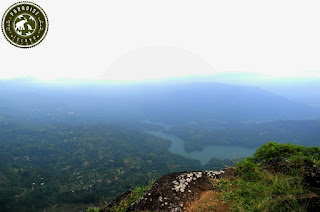The Sri Lanka Blue Magpie is a member of the crow
family, which lives in the rainforests and highlands of Sri Lanka and is one of
the island’s 33 endemic species
The Sri
Lanka Blue Magpie is around the same size as the European Magpie at 42-47 cm,
the adults are bright blue with chestnut head and wings, and a long
white-tipped tail. The legs and bill are red. The young bird is a duller
version of the adult. The Sri Lanka Blue Magpie has a variety of calls
including mimicry, a loud chink-chink and a
rasping krak-krak-krak-krak.
This is a species lives in dense wet
evergreen temperate rain forest, heavy virgin forests of the mountain
areas and wet zone foot hills. Their numbers are declining due to the loss of
habitat.
It is scarce and usually shy, but locally common and
bolder. It associates in flocks up to six or seven, but pairs or solitary
individuals are sometimes met with and can also occur in mixed species feeding
flocks dubbed as bird waves in Sinharaja. A very energetic, agile bird, most of
its time is spent in searching for food among foliage at all levels from the
ground to the tops of tall trees. It is largely carnivorous, eating small
frogs, lizards, insects and other invertebrates, but will eat fruit.
The breeding season is in the first quarter of the year, so far as is known,
but the nest has seldom been found. The nest resembled a small crow’s nest. It
is very well concealed among small twigs and foliage near the top of the tree.
The eggs number three to five.
The trails in the Sinharaja Rain Forest, Peak Wilderness Sanctuary, Horton Plains National Park, Makandawa Forest reserve are the best
places to see this colorful endemic.
The Sri
Lanka Blue Magpie is classified as Vulnerable (VU), considered to be facing a
high risk of extinction in the wild.






































































